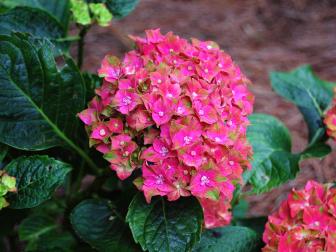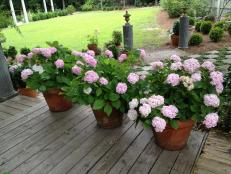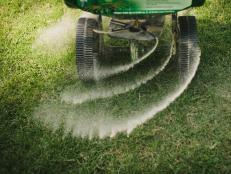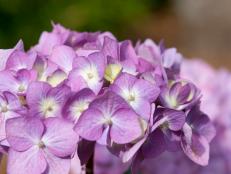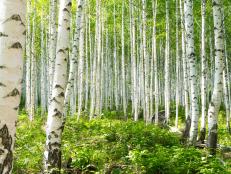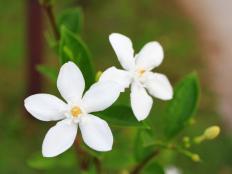Winterizing Hydrangeas
Learn how to care for hydrangeas in the winter so these beauties will shine next summer.
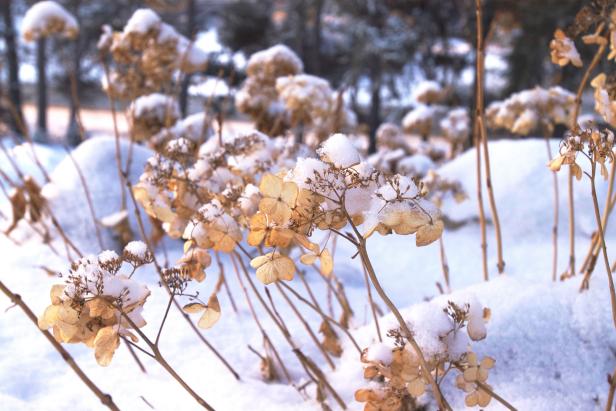
Endless Summer Hydrangeas
Protect hydrangeas during winter with a layer of mulch. Leave faded blooms to create winter interest.

Hydrangeas are one of the garden’s most beloved Southern belles. There’s a lot to love — the shrubs are shade tolerant, come in a variety of hues and can provide interest year-round. What’s more, hydrangeas are typically very easy to care for and make themselves at home even in difficult growing conditions.
How to Plant, Grow and Care for Hydrangeas
No garden’s complete without this old-fashioned favorite, and new varieties make hydrangeas easier than ever to grow.
With weather all over the place, you might be wondering how to make sure your shrubs stay safe and sound through winter. I know I am here in Georgia. So, I asked Ryan McEnaney from Bailey Nurseries the top hydrangea winter care questions and luckily, it’s not too hard to provide protection:
Is there a time or temperature when it’s "too late" for winterizing hydrangeas?
Any protection is good protection. Temperatures fluctuate throughout the winter months, so if you’ve already hit some really cold patches some damage may be done. That said, still give it some protection to prevent anything that may come in later months.
Will mulch prevent plants from heaving? Is there a type of mulch that is better for winterizing hydrangeas? When spring returns, do I need to remove the mulch?
Mulch absolutely helps plants, both in the ground and in containers, throughout the winter months. Beyond general protection, the mulch’s job is to create a more consistent environment than what is happening outside. In some parts of the country, temperatures can fluctuate from -10 to 30 degrees in a week or two. As that happens, water molecules in the ground freeze (contract) and then melt (expand), disrupting the root system (heaving). Mulch helps alleviate those dramatic changes to protect the plants. We recommend pine straw, oak leaves or wood mulch.
In spring, wait until you pass your final frost date to [remove to the mulch] to avoid late spring damage, but don’t wait too long because heat creates moisture, which can cause the stems to rot without air movement.
59 Gorgeous Hydrangea Varieties 59 Photos
This beautiful flowering shrub can add color and abundance to your garden.
Do I need to take any extra steps to protect a hydrangea if I’m growing it outside of its proper growing zone? Should I cover them in burlap or another kind of covering like I might with other shrubs?
If you’re trying to grow something in a marginally hardy area, do give it an extra blanket for the winter. It’s like getting off the plane in January from Hawaii to Minnesota; you’ll probably need an extra layer or two more than someone who lives in the cold regularly. Wrapping the shrub in burlap does provide some good protection, or consider putting a wire cage around the entire shrub and fill the cage with leaves or pine straw before wrapping in burlap.
How often should hydrangeas be watered over winter?
If you’re in an area that gets snow, you shouldn’t have to water all winter long. If you’re in a warmer climate with no snow and you have little winter rain, you may need to apply once a month or so. Since the plants have no leaves and aren’t growing, their water needs are minimal, so unless it’s bone dry you can leave it. The same goes for hydrangeas in containers. Easy peasy.
We’ve had a bad drought and it’s really done a number on a small hydrangea I planted last spring. The poor thing has lost all its leaves, Is there anything I can do right now to help give it a better chance of survival through the winter? What would signal a lost cause?
In fall and winter, don’t consider it a lost cause. They’re supposed to lose their leaves this time of year. Make sure it stays hydrated throughout the winter if you don’t have snow cover. Even though the plants are dormant, they still need some hydration at their roots. Snow cover not only provides insulation, but also a water source. If you live in an area that doesn’t have snow — or doesn’t get snow — make sure you’ve got enough rain or water to get them through. Also, be sure the base of the hydrangea is covered with wood chips, oak leaves, pine straw or other mulch. With or without snow, it gives the insulation you need plus a little added protection from rodents and bunnies that are hungry in the winter months.
You may be tempted to prune hydrangeas when you’re giving other plants a trim in late winter, but McEnaney warns it’s important to know what type of hydrangea you have before picking up the shears.
“Remember, if you’ve got a reblooming or mophead hydrangea, just give a small haircut in the spring,” he says. “If you’ve got a cone-shaped hydrangea, cut back by 1/3 to 1/2 in late winter. If you’ve got a cylindrical oakleaf-type, prune after flowering in mid-summer.”
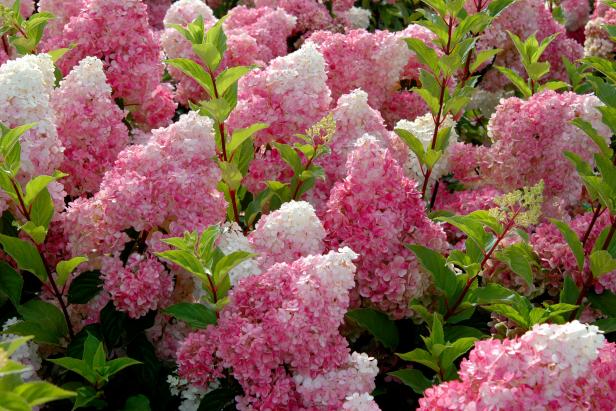
First Editions
'Vanilla Strawberry' is a panicle hydrangea that shows off candy-colored blooms from midsummer to fall. Blooms form in early spring, so prune or shape plants in late winter. 'Vanilla Strawberry' can reach heights of 6 feet and can be trained as a standard.
This is because different varieties form blooms at different times of the year.
“When in doubt, do not prune in the fall,” McEnaney cautions. “You run the risk of pruning off blooms that are formed in the fall, therefore sacrificing your blooms for next year. Just be patient, let this season’s blooms give you some winter interest, and then prune in spring.”
If you don’t know the variety, reach for help from a local nursery, garden center, county extension office or even a fellow gardener to help you identify it.
You should also wait until spring to fertilize.
“Too much fertilizer is actually harmful,” he says. “When you’re at your local garden center, look for a fertilizer that is high in phosphorus; that’s the element that encourages bloom production and will get you the biggest bang for your buck. Follow the package directions and don’t overdo the fertilizing or it can burn the root system and stop flowers from forming. If anything, one other fertilizer application in mid-summer is good, but be sure to stop any fertilizing by early fall.”








